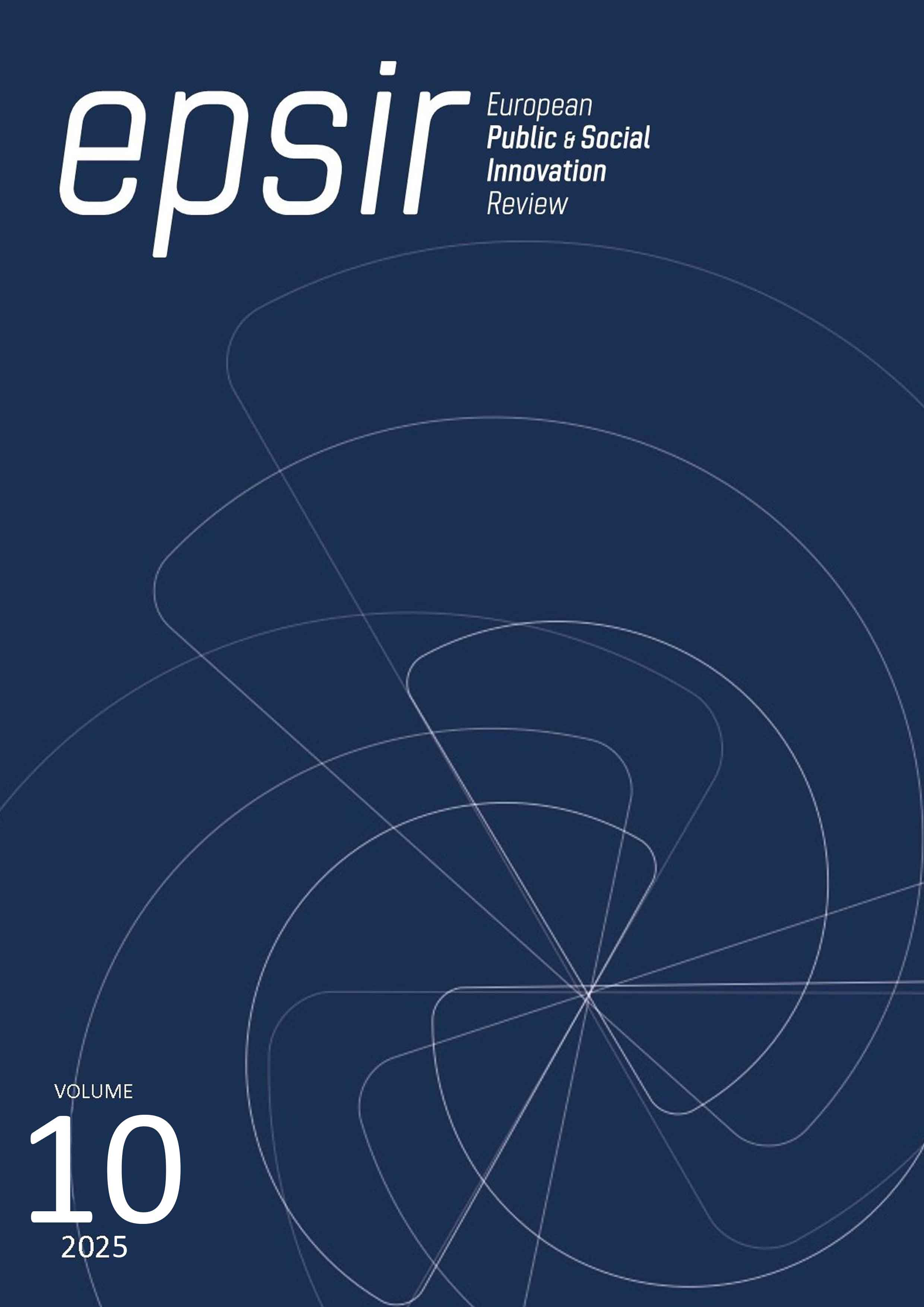Reflections of master’s Students in Inclusive and Intercultural Education: Research Perspectives on Inclusion and Interculturality
DOI:
https://doi.org/10.31637/epsir-2025-1625Keywords:
interculturality, place of enunciation, positioning, virtual education, tensions, reflections, inclusionAbstract
Introduction: The research aims to ensure equitable access to education and promote respect for cultural diversity. This study focuses on students of the virtual master’s program in Inclusive and Intercultural Education at Corporación Universitaria Minuto de Dios, with the objective of exploring their perspectives and areas of interest. Objectives: Explore and understand in depth the perceptions and practices of Master's students. Methodology: A qualitative approach was used, employing methods such as pedagogical reflection circles and documentary analysis of academic projects. Results: The findings reveal a deep understanding of the students' perspectives on inclusive and intercultural education. They highlight how these students, committed to inclusion and diversity, face and manage tensions in their educational practices, and how their approaches can inform the design of educational programs that are more sensitive to cultural diversity. Discussion: The results suggest that conceptualizing inclusive and intercultural education as "borderlands" is useful for understanding the intersections between identities, cultures, and experiences. The identified tensions are seen as opportunities for dialogue and a deeper understanding of diversity and inequalities.
Downloads
References
Acevedo Zapata, S. (2024). Inclusión digital y educación inclusiva. Aportes para el diseño de proyectos pedagógicos con el uso de tecnologías de la comunicación. Revista de Investigaciones UNAD, 13(1), 41-57. https://doi.org/10.22490/25391887.1130 DOI: https://doi.org/10.22490/25391887.1130
Ainscow, M. (2016). Diversity and Equity: A Global Education Challenge. New Zealand Journal of Educational Studies, 51, 143-155. https://doi.org/10.1007/s40841-016-0056-x DOI: https://doi.org/10.1007/s40841-016-0056-x
Al Hashimi, S., Sadoun, J., Almahoozi, Y., Jawad, F., Hasan, N. y Makhubu, N. (2021). Examining perceptions of inclusion of deaf and hard-of-hearing students in art and design higher education in Bahrain. Cogent Arts & Humanities, 8(1). https://doi.org/10.1080/23311983.2021.1960698 DOI: https://doi.org/10.1080/23311983.2021.1960698
Aparici, R. y Silva, M. (2012). Pedagogía de la interactividad. Comunicar, 38(XIX), 51-58. http://dx.doi.org/10.3916/C38-2012-02-05 DOI: https://doi.org/10.3916/C38-2012-02-05
Bourdieu, P. (2008). Capital cultural, escuela y espacio social. Siglo XXI Editores.
Cama, A. (2018). La sobrerrepresentación de escolares de nacionalidad extranjera en el grupo de alumnado con necesidades educativas especiales. Revista Internacional de Estudios Migratorios, 8(1). http://dx.doi.org/10.25115/riem.v8i1.2075 DOI: https://doi.org/10.25115/riem.v8i1.2075
Colomé, D. (2019). Objetos de Aprendizaje y Recursos Educativos Abiertos en Educación Superior. Edutec, Revista Electrónica de Tecnología Educativa, 69, 89-101. https://doi.org/10.21556/edutec.2019.69.1221 DOI: https://doi.org/10.21556/edutec.2019.69.1221
Da Silva, T. T. (1995). Escuela, conocimiento y currículum. Ensayos críticos. Miño y Dávila.
Escarbajal Frutos, A. (2010). Educación inclusiva e intercultural. International Journal of Developmental and Educational Psychology, 3(1), 411-418. www.redalyc.org/pdf/3498/349832326044.pdf
Foley, D. E. (2004). El indígena silencioso como una producción cultural. Cuadernos de Antropología Social, 19, 11-28. www.redalyc.org/pdf/1809/180913911002.pdf
Franzé, A. (2002). Lo que sabía no valía. Escuela, diversidad e inmigración. Consejo Económico y Social de la Comunidad de Madrid. https://acortar.link/BiazJI
García Peñalvo, F. J., Conde García, M. Á., Alier Forment, M. y Casany Guerrero, M. J. (2011). Opening Learning Management Systems to personal learning environments. Journal of Universal Computer Science, 17(9), 1222-1240. https://acortar.link/J7nRkJ
Gráinne, C. (2013). MOOCs as disruptive technologies: strategies for enhancing the learner experience and quality of MOOCs. Revista de Educación a Distancia (RED), 39, 1-17. https://revistas.um.es/red/article/view/234221/179941
Gros Salvat, B. (2018). La evolución del e-learning: del aula virtual. RIED. Revista Iberoamericana de Educación, 21(2), 69-78. https://doi.org/10.5944/ried.21.2.20577 DOI: https://doi.org/10.5944/ried.21.2.20577
Guillén, H. M. y Flores, W. O. (2023). Desafíos de una educación inclusiva en los procesos de formación de estudiantes universitarios de la Universidad de las Regiones Autónomas de la Costa Caribe de Nicaragua (URACCAN) Recinto Bluefields. Ciencias de la educación, 48, 145- 163. https://doi.org/10.5377/farem.v12i48.17527 DOI: https://doi.org/10.5377/farem.v12i48.17527
Kuntze, S. A. U. (2017). Hybrid task design: connecting learning opportunities related to critical thinking and statistical thinking. ZDM Mathematics Education, 49, 923-935. https://doi.org/10.1007/s11858-017-0874-4 DOI: https://doi.org/10.1007/s11858-017-0874-4
Rochefort, B. y Richmond, N. (2011). Connecting Instruction to Connected Technologies. Why Bother? An Instructional Designer’s Perspective. Revista de Universidad y Sociedad del Conocimiento, 8(1), 217-232. https://link.springer.com/article/10.7238/rusc.v8i1.942 DOI: https://doi.org/10.7238/rusc.v8i1.942
Sánchez Prieto, J. C., Olmos Migueláñez, S. y García-Peñalvo, F. J. (2014). Understanding mobile learning: devices, pedagogical implications and research lines. Educación y Cultura en la Sociedad de la Información, 15(1), 20-42. https://www.redalyc.org/pdf/2010/201030471003.pdf DOI: https://doi.org/10.14201/eks.11651
Schneckenberg, D. (2004). El e-learning transforma la educación superior, Educar, 33, 143-156. https://doi.org/10.5565/rev/educar.266 DOI: https://doi.org/10.5565/rev/educar.266
Downloads
Published
How to Cite
Issue
Section
License
Copyright (c) 2025 German Andres Santofimio Rojas

This work is licensed under a Creative Commons Attribution-NonCommercial-NoDerivatives 4.0 International License.
Authors who publish with this journal agree to the following terms:- Authors retain copyright and grant the journal right of first publication with the work simultaneously licensed under Creative Commons Non Commercial, No Derivatives Attribution 4.0. International (CC BY-NC-ND 4.0.), that allows others to share the work with an acknowledgement of the work's authorship and initial publication in this journal.
- Authors are able to enter into separate, additional contractual arrangements for the non-exclusive distribution of the journal's published version of the work (e.g., post it to an institutional repository or publish it in a book), with an acknowledgement of its initial publication in this journal.
- Authors are permitted and encouraged to post their work online (e.g., in institutional repositories or on their website) prior to and during the submission process, as it can lead to productive exchanges, as well as earlier and greater citation of published work (See The Effect of Open Access).




